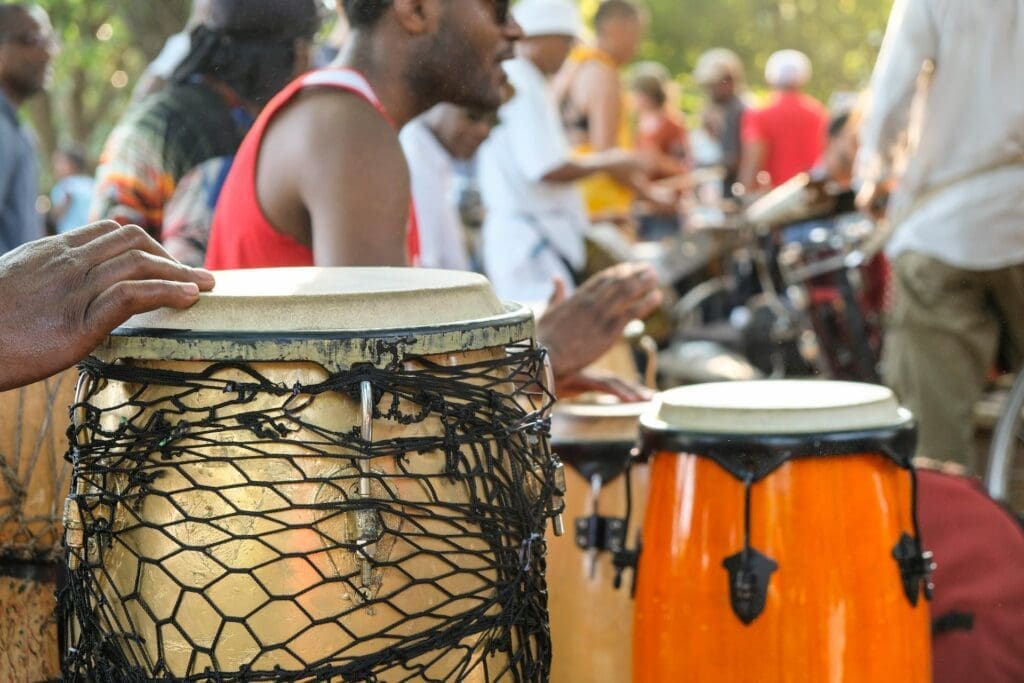If you’re looking for the perfect conga drums to add to your ensemble, look no further!
In this article, we’ll be discussing the best conga drums on the market and where to buy them. We’ll be taking a look at the different sizes, materials, and features that make conga drums so unique, as well as the best places to purchase them. So, whether you’re just starting out or a seasoned professional, we’ll have something for everyone. So, let’s get started!
History Of Conga Drums
The conga drum originated in Cuba, closely linked to the influx of slaves from the Bantu-speaking Congo region of Africa during the 17th and 18th centuries. After slavery was abolished in Cuba in the late 19th century, a surge of cultural exchange and growth occurred. This led to the development of Rumba and other drum-focused music styles, as well as conga drums and related instruments.
The conga drum’s most notable ancestor is the makúta, a tall, barrel-shaped drum utilized in private Bantu religious rituals. Additionally, the conga has some connections to Nigerian origins through the Lucumí bembé drum, a somewhat smaller instrument resembling a conga.
In the late 19th century, rumba emerged from impoverished urban areas in cities like Havana and Matanzas, becoming the first genre to require a conga drum in its standard instrumentation. By the 1930s, conga drums were incorporated into ensembles for the popular Cuban dance style called Son, which later significantly influenced American Jazz music in the 1930s and 40s. The Son and various other Cuban styles, rhythms, and songs eventually contributed to the development and commercialization of Salsa music in the early 1960s.
What are Conga Drums?
Conga drums are a type of hand drum that originated in Cuba and are popular in Latin American and Caribbean music. Conga drums are typically cylindrical in shape and come in a variety of sizes. They are usually made from wood and covered in animal skin. They have a distinct sound that is characterized by a deep, low-pitched tone.
The drum is usually made from a hollowed-out log and is typically between 18 and 24 inches in length. It is typically played with two sticks, one in each hand, and is often used in combination with other percussion instruments such as shakers, claves, and bells. The congo drum is often used to set the rhythm and is also used in many different genres of music, including jazz, funk, and reggae.
The best conga drums are made from quality materials and provide a rich, full sound when played. They should also be easy to tune and have a comfortable playing surface.
This instrument comes in a variety of sizes and features, each of which can impact the sound of the drum. Smaller conga drums tend to have a higher pitch and a brighter sound, while larger drums tend to have a lower pitch and a deeper sound. The material of the drum also affects the sound, with wooden drums producing a warmer sound, while fiberglass drums produce a more cutting sound.
The shape of the drum affects the sound, with rounded drums producing a softer sound and squared drums producing a sharper sound. The number of lugs on the drum also affects the sound, with more lugs allowing for a wider range of tones. Finally, the type of skin used on the drum also affects the sound, with calfskin producing a warmer sound and synthetic skin producing a sharper sound.
Where to buy
Click here for the USA.
Click here for the UK.










